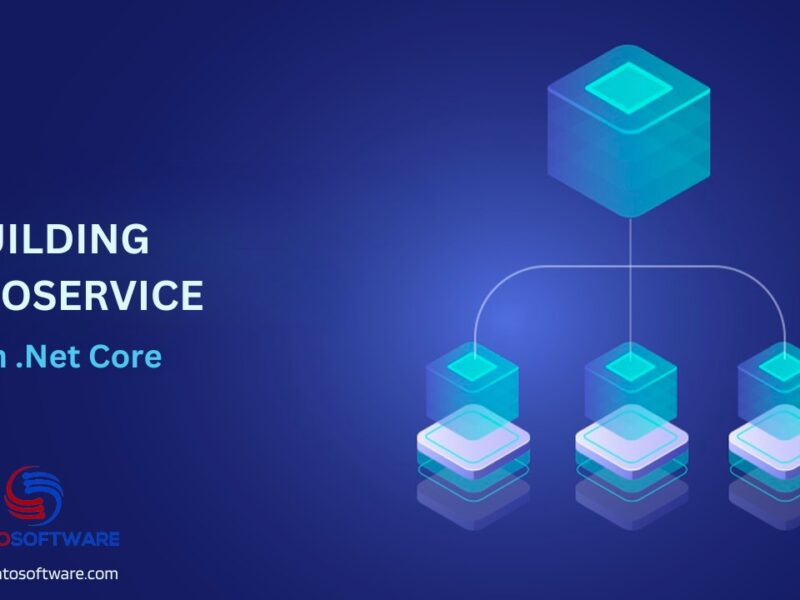Deployment and hosting strategies are integral components of the software development process, impacting the accessibility, scalability, reliability, security, and overall performance of applications. Organizations that prioritize these aspects can deliver high-quality, reliable, and efficient software solutions to their users. Here are few reasons that make them highly important.
User Accessibility and Experience:
Efficient deployment ensures that applications are accessible to users. Users can access and use the application without any downtime or disruptions, leading to a positive user experience.
Scalability:
Deployment strategies enable applications to scale seamlessly. Whether it’s handling increased user loads or accommodating additional features, a well-thought-out deployment strategy ensures that the application can scale horizontally or vertically as needed.
Reliability and Availability:
Robust hosting strategies contribute to the reliability and availability of applications. By using reliable hosting services and deploying applications across multiple servers or regions, developers can minimize the risk of downtime and ensure high availability.
Performance Optimization:
Choosing the right hosting environment and deployment strategy allows developers to optimize the performance of their applications. This includes considerations such as load balancing, content delivery networks (CDNs), and caching mechanisms.
Security:
Deployment strategies play a role in securing applications. Ensuring that the deployment process includes security measures, such as encryption, authentication, and authorization, helps protect the application and its data from unauthorized access or malicious attacks.
Rollback and Version Control:
Deployment strategies facilitate easy rollback to previous versions in case of issues with the latest release. This is critical for minimizing the impact of bugs or unexpected behavior and maintaining a reliable and stable application.
Cost Efficiency:
Efficient hosting strategies contribute to cost optimization. By choosing the right hosting services, utilizing resources effectively, and scaling based on demand, organizations can avoid unnecessary costs associated with over-provisioning or underutilization of resources.
Continuous Integration and Continuous Deployment (CI/CD):
Implementing CI/CD practices streamlines the deployment process, allowing developers to release updates and new features more frequently. This leads to faster time-to-market and ensures that the application stays competitive in a rapidly evolving technological landscape.
Monitoring and Analytics:
Proper deployment and hosting strategies enable developers to implement effective monitoring and analytics solutions. This allows for real-time performance tracking, error detection, and insights into user behavior, facilitating data-driven improvements and optimizations.
Compliance and Governance:
Certain industries and applications need to adhere to specific compliance and governance standards. Deployment and hosting strategies that incorporate necessary security measures and compliance protocols help meet regulatory requirements.
Hosting options for NodeJS Applications
Node.js applications can be hosted in various environments based on factors such as scalability, performance requirements, and deployment preferences. Here are some popular hosting options for Node.js applications:
Traditional Hosting Providers:
- AWS (Amazon Web Services): AWS provides a range of services like EC2 (Elastic Compute Cloud) instances where you can deploy Node.js applications. AWS Elastic Beanstalk is another service that simplifies the deployment process.
- Azure: Microsoft Azure offers services like Azure App Service and Virtual Machines for hosting Node.js applications. Azure App Service allows for easy deployment and scaling.
- Google Cloud Platform (GCP): GCP provides Compute Engine instances for hosting Node.js applications, and App Engine for managed deployments.
Platform-as-a-Service (PaaS) Providers:
- Heroku: Heroku is a popular PaaS platform that simplifies deployment and scaling. Developers can deploy Node.js applications with a simple command, and Heroku takes care of the underlying infrastructure.
- Platform.sh: Platform.sh is a PaaS provider that supports Node.js applications. It offers a Git-based workflow and automatically manages infrastructure and scaling.
Containerization and Orchestration:
- Docker: Docker allows you to containerize Node.js applications, making them portable across different environments. You can use Docker Compose for multi-container applications.
- Kubernetes: Kubernetes is a container orchestration system that helps in deploying, scaling, and managing containerized applications, including those built with Node.js.
Serverless Computing:
- AWS Lambda: With AWS Lambda, you can run Node.js functions in a serverless environment. It’s a pay-as-you-go service where you only pay for the compute time consumed by your functions.
- Azure Functions: Similar to AWS Lambda, Azure Functions enable serverless execution of Node.js functions. You can focus on writing code without managing the underlying infrastructure.
Content Delivery Networks (CDNs):
- Netlify: Netlify provides a platform for deploying and hosting static websites, but it also supports serverless functions. It’s easy to use and integrates with version control systems like Git.
- Vercel: Vercel is known for its focus on frontend deployment, but it also supports serverless functions and can host full-stack applications built with Node.js.
Self-Managed Servers:
- You can deploy Node.js applications on self-managed servers using tools like Nginx or Apache as reverse proxies. This allows you to have more control over the server configuration.
Managed Node.js Hosting Services:
- NodeChef: NodeChef is a managed Node.js hosting service that provides automatic scaling, easy deployment, and database hosting. When choosing a hosting option for your Node.js application, consider factors such as scalability, ease of deployment, management overhead, cost, and specific features provided by each hosting solution. The optimal choice often depends on the requirements and constraints of your project.
Deployment Strategies for NodeJS Applications
Deploying Node.js applications involves getting your code from a development environment to a production environment where it can be accessed by users. There are various deployment strategies for Node.js applications, and the choice depends on factors such as the complexity of your application, the scale of deployment, and the desired balance between deployment speed and safety.
Here are some common deployment strategies:
Manual Deployment:
Description: In manual deployment, developers manually copy files or push the codebase to the production server.
Pros: Simple and easy to understand, suitable for small projects or when quick updates are needed.
Cons: Prone to human error, downtime during deployment, not scalable for larger applications.
Continuous Deployment (CD):
Description: CD involves automatically deploying code changes to production after passing automated tests. It’s often used in conjunction with continuous integration.
Pros: Fast, reduces the chance of human error, ensures that the latest code is always in production.
Cons: Requires a robust testing suite to catch potential issues, may not be suitable for all applications.
Rolling Deployment:
Description: Rolling deployment gradually replaces instances of the old application with the new one, minimizing downtime.
Pros: Continuous service availability, less risk of downtime, and the ability to rollback easily.
Cons: Requires additional infrastructure for load balancing and may take longer to complete.
Blue-Green Deployment:
Description: Blue-Green deployment involves having two identical production environments (Blue and Green). Only one environment serves live traffic at a time.
Pros: Minimal downtime, easy rollback by switching traffic to the previous environment, and efficient testing of the new environment.
Cons: Requires additional infrastructure and increased complexity.
Canary Deployment:
Description: Canary deployment involves gradually rolling out a new version to a small subset of users to test for issues before a full deployment.
Pros: Allows early detection of potential issues, limited impact if problems arise, and controlled exposure to new features.
Cons: Requires a robust monitoring system, and potential user dissatisfaction if issues occur.
Feature Toggles (Feature Flags):
Description: Feature toggles involve deploying new features but keeping them hidden until they are ready to be released.
Pros: Allows for gradual feature rollout, easy rollback by toggling features off, and enables A/B testing.
Cons: Requires careful management of feature toggles and may lead to increased technical debt.
Serverless Deployment:
Description: In a serverless deployment, the application is broken down into functions, and each function is deployed independently.
Pros: Highly scalable, cost-effective (pay-per-execution), and low maintenance.
Cons: Limited control over the underlying infrastructure, potential cold start latency.
Containerization and Orchestration:
Description: Docker containers can encapsulate Node.js applications, and orchestration tools like Kubernetes manage the deployment, scaling, and monitoring of these containers.
Pros: Consistent deployment across different environments, easy scaling, and resource efficiency.
Cons: Requires knowledge of containerization and orchestration tools.
The choice of deployment strategy depends on the specific needs and goals of your project. Consider factors such as deployment speed, downtime tolerance, rollback capabilities, and the complexity of your infrastructure when selecting the most suitable strategy for your Node.js application.
DevOps practices
DevOps practices aim to enhance collaboration and communication between development and operations teams, automate processes, and streamline the software delivery lifecycle. Here are some DevOps practices specifically relevant to the deployment of Node.js applications:
Infrastructure as Code (IaC):
Use tools like Terraform or AWS CloudFormation to define and manage infrastructure as code. This allows for consistent and repeatable deployments, making it easier to manage and version infrastructure configurations.
Continuous Integration (CI):
Implement CI practices to automatically build and test your Node.js application whenever changes are pushed to the version control system (e.g., Git). Popular CI tools for Node.js include Jenkins, Travis CI, and GitLab CI.
Continuous Deployment (CD):
Extend CI into CD by automating the deployment process. This ensures that tested and validated code is automatically deployed to production. CD tools like Jenkins, CircleCI, and GitHub Actions can be configured for Node.js applications.
Automated Testing:
Implement a comprehensive suite of automated tests, including unit tests, integration tests, and end-to-end tests. Tools like Mocha, Jest, and Selenium can be used to automate testing, helping catch issues early in the development process.
Configuration Management:
Manage configuration settings separately from the application code. Utilize environment variables or configuration files to store settings, and ensure that configurations are consistent across different environments (development, staging, production).
Containerization:
Use containerization to package your Node.js application and its dependencies. Docker is a popular choice for creating lightweight, portable containers. This ensures consistency between development and production environments.
Orchestration with Kubernetes:
If using containers, leverage Kubernetes for container orchestration. Kubernetes simplifies the deployment, scaling, and management of containerized applications, providing features like auto-scaling and rolling updates.
Monitoring and Logging:
Implement monitoring and logging tools to gain insights into the health and performance of your Node.js application. Tools like Prometheus, Grafana, and ELK stack (Elasticsearch, Logstash, Kibana) can be used to monitor and analyze application logs.
Deployment Pipelines:
Define deployment pipelines that automate the sequence of steps required for deploying your Node.js application. This includes building artifacts, running tests, and deploying to different environments. Tools like Jenkins, GitLab CI, and Azure DevOps facilitate pipeline creation.
Immutable Infrastructure:
Adopt the concept of immutable infrastructure where servers are treated as disposable and are replaced rather than updated. This reduces the risk of configuration drift and ensures consistent deployments.
Collaboration and Communication:
Foster a culture of collaboration and communication between development and operations teams. Use collaboration tools, like Slack or Microsoft Teams, to facilitate communication and ensure that everyone is on the same page.
Security Automation:
Integrate security practices into your deployment pipeline. Use tools for static code analysis, dependency scanning, and vulnerability assessments to identify and address security issues early in the development process. By incorporating these DevOps practices into your Node.js application deployment process, you can achieve more reliable, consistent, and efficient deployments while fostering collaboration between development and operations teams.



